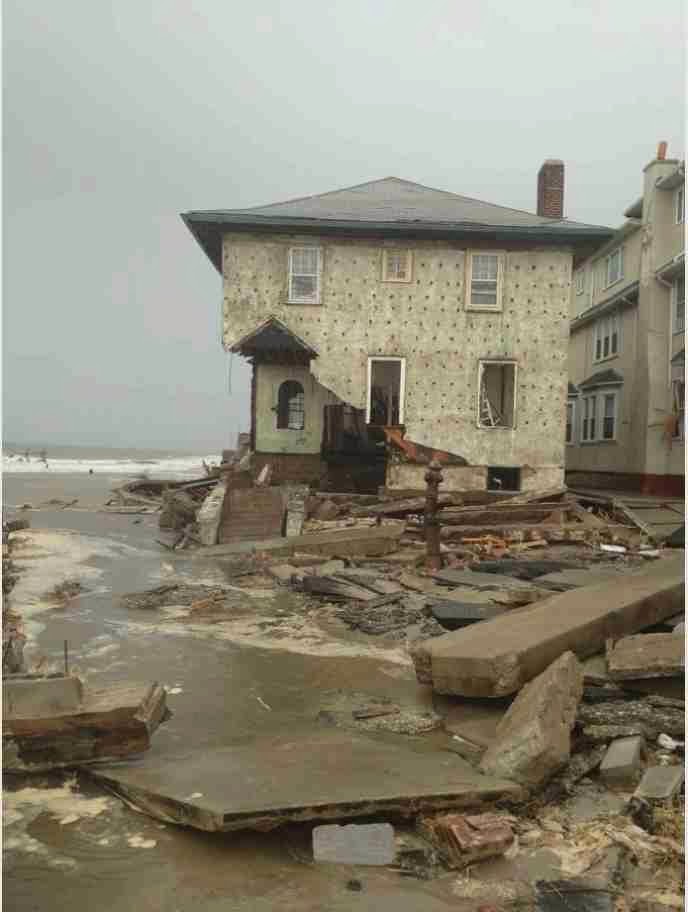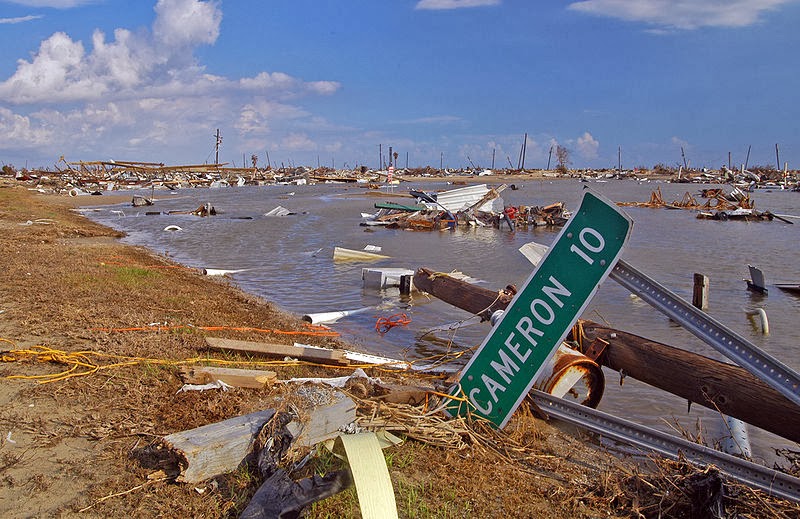Storms generally lead to negative impacts to lives and property such as storm surge, heavy rain or snow (causing flooding or road impassibility), lightning, wildfires, and vertical wind shear; however, systems with significant rainfall can alleviate drought in places they move through. Heavy snowfall can allow special recreational activities to take place which would not be possible otherwise, such as skiing and snowmobiling.
Data refer: http://en.wikipedia.org
http://commons.wikimedia.org
Hurricane Katrina aftermath in New Orleans
New Orleans, La. August 2005 -- Aerial of a flooded roadway coming out of the flood waters and then going back in. Oil slicks are visible on the surface of the water. New Orleans is being evacuated as a result of floods. Thousand of people have been rescued from the flood waters by moving to their roofs and attics. Photo by Jocelyn Augustino/FEMA
Hurricane-caused shipwrecks
Southern Louisiana, September 12, 2005 -- Boats tossed around by Hurricane Katrina remain lodged on dry ground. By the Empire High Bridge, Plaquemines Parish. Jocelyn Augustino/FEMA
Galeston Texas after Hurricane Ike: Trolley Stop at Pier 21, with grounded boat
The aftermath of Hurricane Camille. 17 August 1969
Damaged boats and docks in Grand Isle Louisiana after Hurricane Katrina.
Between 31 August and 19 September, 2005
Emma 2008 (storm)
2010 Victorian storms
Hurricane Sandy
Hurricane Sandy (unofficially known as "Superstorm Sandy") was the deadliest and most destructive hurricane of the 2012 Atlantic hurricane season, as well as the second-costliest hurricane in United States history. Classified as the eighteenth named storm, tenth hurricane and second major hurricane of the year, Sandy was a Category 3 storm at its peak intensity when it made landfall in Cuba.While it was a Category 2 storm off the coast of the Northeastern United States, the storm became the largest Atlantic hurricane on record (as measured by diameter, with winds spanning 1,100 miles (1,800 km)).[2][3] Estimates as of June 2013 assess damage to have been over $68 billion (2013 USD), a total surpassed only by Hurricane Katrina. At least 286 people were killed along the path of the storm in seven countries.
Hurricane Rita
Hurricane Rita was the fourth–most intense Atlantic hurricane ever recorded and the most intense tropical cyclone ever observed in the Gulf of Mexico. Part of the record-breaking 2005 Atlantic hurricane season, which included three of the six most intense Atlantic hurricanes ever (along with #1 Wilma and #6 Katrina), Rita was the eighteenth named storm, tenth hurricane, and fifth major hurricane of the 2005 season. Rita formed near The Bahamas from a tropical wave on September 18 that originally developed off the coast of West Africa. It moved westward, and after passing through the Florida Straits, Rita entered an environment of abnormally warm waters. It rapidly intensified to reach peak winds of 180 mph (285 km/h) on September 20. After steadily weakening and beginning to curve to the northwest, Rita gradually weakened and made landfall on Sabine Pass, Texas with winds of 120 mph (195 km/h) on September 24. It weakened over land and degenerated into a large low-pressure area over the lower Mississippi Valley on September 26.
Cyclone Nargis
Cyclone Nargis (JTWC designation: 01B, also known as Very Severe Cyclonic Storm Nargis) was a rare, eastward moving at low-latitude strong tropical cyclone that caused the worst natural disaster in the recorded history of Myanmar.The cyclone made landfall in Myanmar on Friday, 2 May 2008, sending a storm surge 40 kilometers up the densely populated Irrawaddy delta, causing catastrophic destruction and at least 138,000 fatalities.The Labutta Township alone was reported to have 80,000 dead, with about 10,000 more deaths in Bogale. There were around 55,000 people missing and many other deaths were found in other towns and areas, although the Myanmar government's official death toll may have been underreported, and there have been allegations that government officials stopped updating the death toll after 138,000 to minimize political fallout. The feared 'second wave' of fatalities from disease and lack of relief efforts never materialized.Damage was estimated at over K62,988,000,000 (US$10 billion), which made it the most damaging cyclone ever recorded in this basin.


















